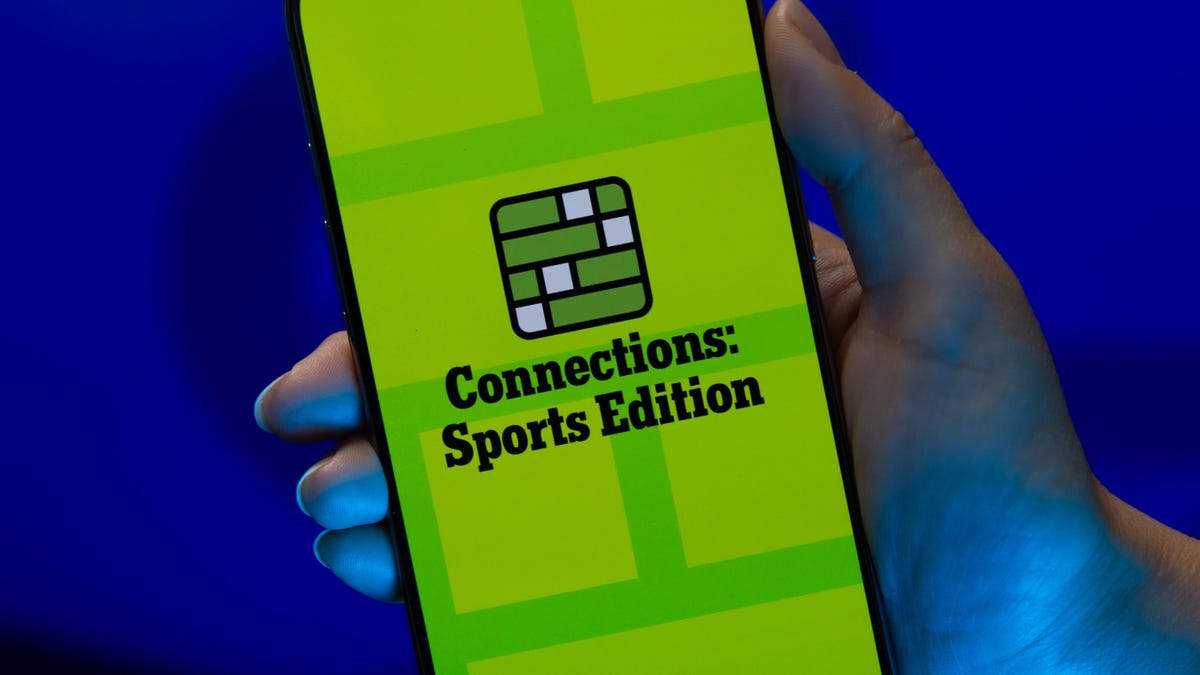Technologies
The OnePlus 11 Is Coming Soon, and I Can’t Wait to Try It
The new phone could be the first time we see camera hardware resulting from OnePlus’ partnership with Hasselblad.

To no one’s surprise, OnePlus’ next phone is called the OnePlus 11 5G. It’s currently available in China, and the phone is set to launch globally on Feb. 7. It follows last year’s pretty great OnePlus 10 Pro and comes on the heels of the OnePlus 10T which left a bad taste in our mouths because of its questionable compromises and a confusing value proposition.
Lucky for us, OnePlus provided a peek at the 11 back in December. And now, the new phone is on full display on OnePlus China’s website. After devouring it with the help of Google Translate, I am reminded of Leonardo DiCaprio’s often-quoted line from the film Django Unchained.
«Gentlemen, you had my curiosity. But now you have my attention.»
I already had high hopes for the 11 because it would be the third-generation phone to be released during OnePlus’ partnership with the iconic camera company Hasselblad. Up to now, Hasselblad’s influence has largely been behind-the-scenes with camera tuning and nifty software features like the Xpan panoramic-style. The OnePlus 11 could be the first time we see actual new camera hardware resulting from the partnership.
I should also point out that details and nuance can be lost in translation, so please keep that in mind as you read on.
The OnePlus 11 looks fantastic
The 11’s design picks up where the 10 Pro left off. Translated, the site states that the OnePlus 11’s look was inspired by a «black hole in science fiction.» But instead of a square-ish camera bump found on the 10 Pro, the 11’s is circular on top with tapered sides that flow into the edge of the phone. It’s reminiscent of a clasp on a leather attaché. When the phone is in landscape, the camera bump’s shape looks almost like the silhouette of Darth Vader’s helmet.
The site shows off the phone in two colors. There is a matte green color, that isn’t quite British racing green, and a textured black finish, which according to translated text is «silk glass.» I gather this means the finish looks textured but to the touch is just flat glass.
My CNET colleague Andrew Lanxon got his hands on a OnePlus 11. While we have to wait a bit to hear his thoughts about testing it, he did share some photos of the phone on Twitter.
There aren’t many photos of the front, but it has a display with waterfall edges that flow off the right and left sides of the phone. The front-facing camera is housed in a hole punch-shaped cutout on the top left side.
An alert slider is visible in a product video on the site that also shows flashy stylized closeups of the OnePlus 11. OnePlus previously confirmed that the button would return after its absence on the OnePlus 10T. The 11 joins the likes of the Nubia Red Magic 8, which has a similar hardware slider for putting the phone into gaming mode.
The OnePlus 11 has the latest Android hardware
The phone has a 6.7-inch AMOLED screen with a variable refresh rate that tops out at 120Hz. The display is LTPO 3. Last year’s 10 Pro had an LTPO 2 display. LTPO stands for low-temperature polycrystalline oxide, which allows displays to have a high refresh rate without killing your battery. According to the translated text, LTPO 3 is smoother and even more power efficient. A graphic claims that the display can drop down to 1Hz, which is the same refresh rate the iPhone 14 Pro uses for its always-on display.
On the inside, the 11 runs on Qualcomm’s Snapdragon 8 Gen 2 chip which according to a OnePlus press release has 35% faster CPU performance and a 25% faster GPU. The 11 is one of the first phones with the new Qualcomm chip. The 11 also comes with 16GB of RAM and either 256GB or 512GB of storage.
Powering everything are dual 2,500 mAh batteries that support 100W fast charging. Last year’s 10 Pro had the same dual-battery setup and supported 80W fast charging, except for US models which were capped at 65W fast charging. The OnePlus 10T supports 150W charging globally and 125W in the US. For perspective, the iPhone 14 Pro supports 20W fast charging. OnePlus says that the 11’s batteries can charge from empty to 100% in 25 minutes.
The cameras are the same but different
The OnePlus 11 has a 50-megapixel main and 48-megapixel ultrawide camera system that’s similar to the 10 Pro’s. It also has a telephoto camera with a 32-megapixel sensor and 2x optical zoom compared to the 10 Pro’s 8-megapixel sensor and 3.3x optical zoom.
Sony made all of the image sensors including the one in the new telephoto camera. But you have to wonder if OnePlus and Hasselblad chose the 32-megapixel sensor and short tele-lens combo because it yields better photos than the tele on the 10 Pro. If that is the case, it’s the first time we see camera hardware design that stems from the OnePlus and Hasselblad partnership.
Translated text suggests the new telephoto camera can take photos with more accurate colors. OnePlus China’s site says that portrait mode pics have better-simulated bokeh that mimics the look of images taken with Hasselblad’s XCD medium-format lenses.
Sample photos from the 11 look good, with balanced colors and highlights that roll off for skin tones. We should take these photos with a big grain of salt because nearly every phone maker’s website flaunts impressive photos taken with their phones – ah, marketing! Sadly, there isn’t any mention of whether these photo improvements will apply to video recording.
Is there a OnePlus 11 Pro?
From everything I read on the website, the OnePlus 11 is the best-spec’d OnePlus phone ever made. It seems to be the «pro» model this year despite lacking the nomenclature. Its 6.7-inch screen is the same size as the one on the 10 Pro. In fact, OnePlus China’s President Li Jie said there is no «pro» version of the OnePlus 11 in response to a question on the Chinese social network Weibo.
That would mark a continued departure from OnePlus’ previous product strategy. Until recently, OnePlus had released three models of its flagship phones, a regular version, a «pro» one and later in the year a T model. For example, in 2020 there was a OnePlus 8, 8 Pro and 8T. The pro models typically have larger displays with a higher resolution and a third rear camera with a telephoto lens compared to the regular version.
Last year, the company released only a OnePlus 10 Pro without a standard model.
What’s next for the OnePlus 11?
The new phone launches in China on Monday, Jan. 9. OnePlus is having a global launch event in India on Tuesday, Feb. 7, where it will also show off the OnePlus Buds Pro 2. I am truly looking forward to trying the phone out for myself, especially that new telephoto camera.
Technologies
Today’s NYT Mini Crossword Answers for Friday, Dec. 26
Here are the answers for The New York Times Mini Crossword for Dec. 26.

Looking for the most recent Mini Crossword answer? Click here for today’s Mini Crossword hints, as well as our daily answers and hints for The New York Times Wordle, Strands, Connections and Connections: Sports Edition puzzles.
Need some help with today’s Mini Crossword? Some of the clues are tough today — I thought maybe 1-Across was referring to the Grinch, or even Oscar the Grouch, but was I ever wrong! Read on for all the answers. And if you could use some hints and guidance for daily solving, check out our Mini Crossword tips.
If you’re looking for today’s Wordle, Connections, Connections: Sports Edition and Strands answers, you can visit CNET’s NYT puzzle hints page.
Read more: Tips and Tricks for Solving The New York Times Mini Crossword
Let’s get to those Mini Crossword clues and answers.
Mini across clues and answers
1A clue: Furry and green, say
Answer: MOSSY
6A clue: State known for its potatoes
Answer: IDAHO
7A clue: Like a faithful friend
Answer: LOYAL
8A clue: Had a beverage
Answer: DRANK
9A clue: Pronoun frequently paired with «her»
Answer: SHE
Mini down clues and answers
1D clue: Not spicy, as salsa
Answer: MILD
2D clue: Reasons for wrinkled noses
Answer: ODORS
3D clue: Words from a doctor checking your tonsils
Answer: SAYAH
4D clue: Comedian Gillis
Answer: SHANE
5D clue: Part of an egg used to make hollandaise sauce
Answer: YOLK
Don’t miss any of our unbiased tech content and lab-based reviews. Add CNET as a preferred Google source.
Technologies
Today’s NYT Connections: Sports Edition Hints and Answers for Dec. 26, #459
Here are hints and the answers for the NYT Connections: Sports Edition puzzle for Dec. 26, No. 459.

Looking for the most recent regular Connections answers? Click here for today’s Connections hints, as well as our daily answers and hints for The New York Times Mini Crossword, Wordle and Strands puzzles.
Today’s Connections: Sports Edition is a tough one. That purple category once again has players looking for a different, but related, hidden word in four of the clues. If you’re struggling with today’s puzzle but still want to solve it, read on for hints and the answers.
Connections: Sports Edition is published by The Athletic, the subscription-based sports journalism site owned by The Times. It doesn’t appear in the NYT Games app, but it does in The Athletic’s own app. Or you can play it for free online.
Read more: NYT Connections: Sports Edition Puzzle Comes Out of Beta
Hints for today’s Connections: Sports Edition groups
Here are four hints for the groupings in today’s Connections: Sports Edition puzzle, ranked from the easiest yellow group to the tough (and sometimes bizarre) purple group.
Yellow group hint: Big Apple jock.
Green group hint: College football fun.
Blue group hint: On the road.
Purple group hint: Hunt down a word in other words.
Answers for today’s Connections: Sports Edition groups
Yellow group: A New York athlete.
Green group: Bowl games.
Blue group: Associated with a team road trip.
Purple group: Ends in a movement verb.
Read more: Wordle Cheat Sheet: Here Are the Most Popular Letters Used in English Words
What are today’s Connections: Sports Edition answers?
The yellow words in today’s Connections
The theme is a New York athlete. The four answers are Islander, Net, Ranger and Yankee.
The green words in today’s Connections
The theme is bowl games. The four answers are Alamo, Gator, Liberty and Pinstripe.
The blue words in today’s Connections
The theme is associated with a team road trip. The four answers are bus, flight, hotel and visiting locker room.
The purple words in today’s Connections
The theme is ends in a movement verb. The four answers are foxtrot (trot), newsprint (sprint), terrace (race) and thunderbolt (bolt).
Don’t miss any of our unbiased tech content and lab-based reviews. Add CNET as a preferred Google source.
Technologies
Today’s NYT Connections Hints, Answers and Help for Dec. 26, #929
Here are some hints and the answers for the NYT Connections puzzle for Dec. 26 #929

Looking for the most recent Connections answers? Click here for today’s Connections hints, as well as our daily answers and hints for The New York Times Mini Crossword, Wordle, Connections: Sports Edition and Strands puzzles.
Today’s NYT Connections puzzle is full of fun pop-culture references. Read on for clues and today’s Connections answers.
The Times has a Connections Bot, like the one for Wordle. Go there after you play to receive a numeric score and to have the program analyze your answers. Players who are registered with the Times Games section can now nerd out by following their progress, including the number of puzzles completed, win rate, number of times they nabbed a perfect score and their win streak.
Read more: Hints, Tips and Strategies to Help You Win at NYT Connections Every Time
Hints for today’s Connections groups
Here are four hints for the groupings in today’s Connections puzzle, ranked from the easiest yellow group to the tough (and sometimes bizarre) purple group.
Yellow group hint: Golden state cliches.
Green group hint: Funny films.
Blue group hint: Rock on.
Purple group hint: Not white.
Answers for today’s Connections groups
Yellow group: California-based character tropes.
Green group: Comedy subgenres.
Blue group: ’70s rock bands.
Purple group: Black ____.
Read more: Wordle Cheat Sheet: Here Are the Most Popular Letters Used in English Words
What are today’s Connections answers?
The yellow words in today’s Connections
The theme is California-based character tropes. The four answers are movie exec, surfer, tech bro and Valley Girl.
The green words in today’s Connections
The theme is comedy subgenres. The four answers are buddy, cringe, screwball and stoner.
The blue words in today’s Connections
The theme is ’70s rock bands. The four answers are America, Chicago, Foreigner and Journey.
The purple words in today’s Connections
The theme is black ____. The four answers are Forest, Friday, Panther and Widow.
Don’t miss any of our unbiased tech content and lab-based reviews. Add CNET as a preferred Google source.
-

 Technologies3 года ago
Technologies3 года agoTech Companies Need to Be Held Accountable for Security, Experts Say
-

 Technologies3 года ago
Technologies3 года agoBest Handheld Game Console in 2023
-

 Technologies3 года ago
Technologies3 года agoTighten Up Your VR Game With the Best Head Straps for Quest 2
-

 Technologies4 года ago
Technologies4 года agoBlack Friday 2021: The best deals on TVs, headphones, kitchenware, and more
-

 Technologies4 года ago
Technologies4 года agoVerum, Wickr and Threema: next generation secured messengers
-

 Technologies4 года ago
Technologies4 года agoGoogle to require vaccinations as Silicon Valley rethinks return-to-office policies
-

 Technologies4 года ago
Technologies4 года agoOlivia Harlan Dekker for Verum Messenger
-

 Technologies4 года ago
Technologies4 года agoiPhone 13 event: How to watch Apple’s big announcement tomorrow
